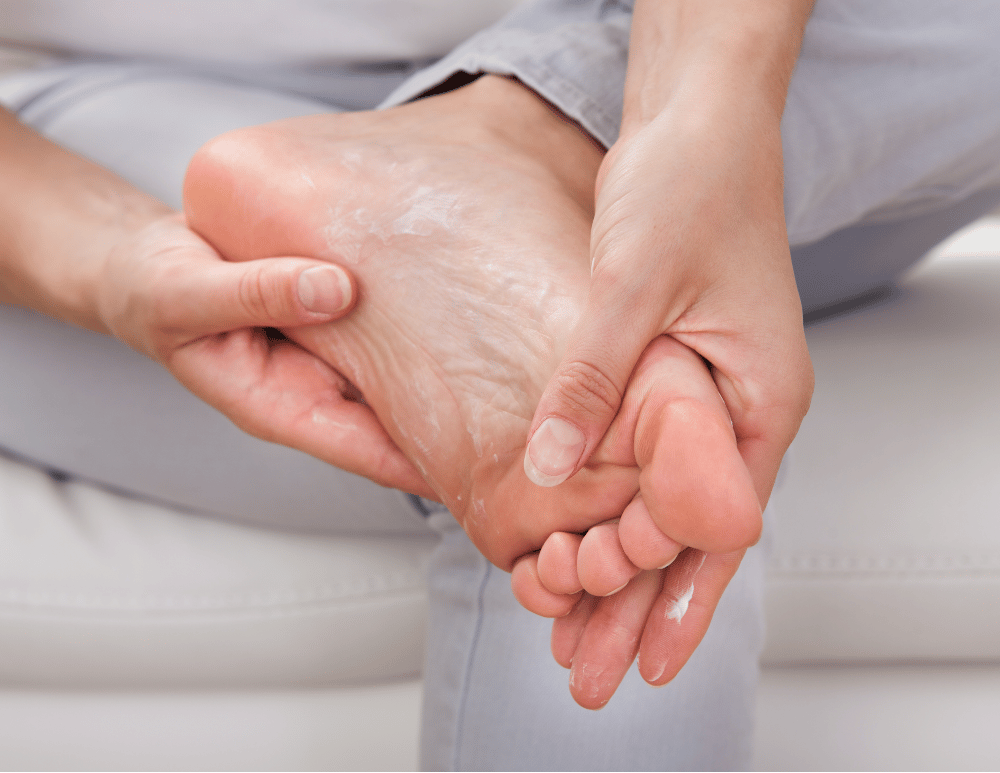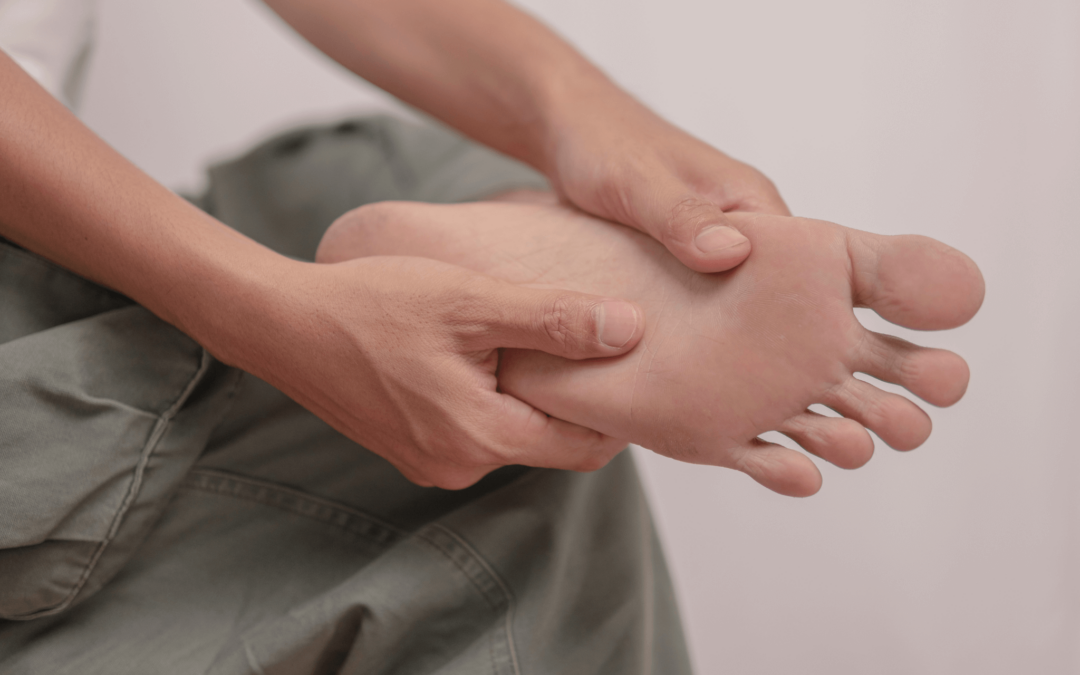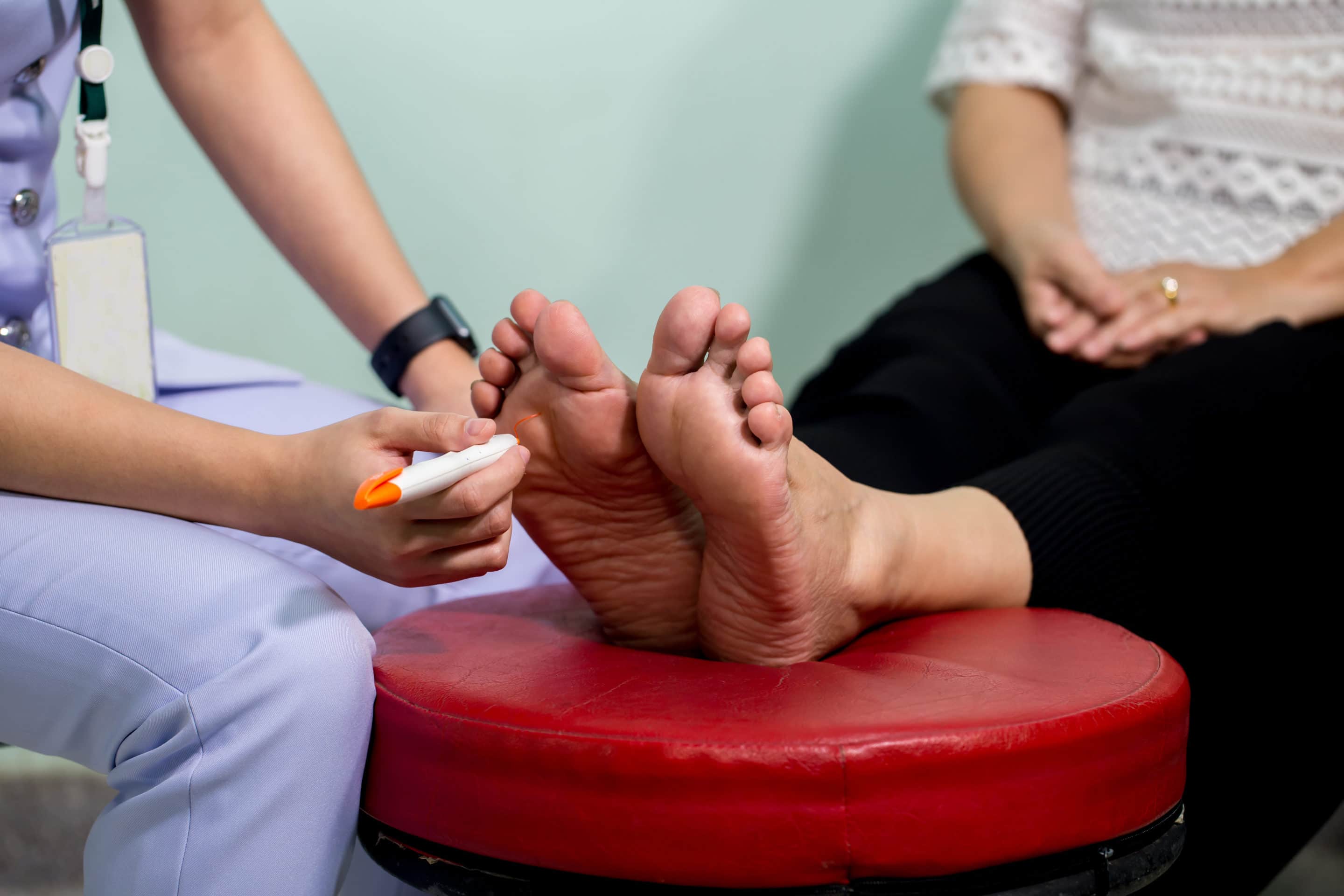Proper management of diabetes involves more than a combination of medications and lifestyle changes. Amongst them, diabetes foot care is one of the most neglected and un-researched aspects.
Yet, an amputation takes place across the globe every 30 seconds due to diabetes-related complications. With the increasing levels of diabetes in middle-aged and older adults, this global disaster requires well-thought solutions and preventive measures.
Common Diabetic Foot Care Complications
Lack of proper monitoring of blood sugar levels has disastrous effects on patients’ feet. The first likely impediment is reduced blood circulation to the feet. The human body has a well-protected and regulated system that controls blood circulation. Over time, blood pores may get obstructed by fat deposits, cholesterol, and waste products. As a result, the patient’s access to vital nutrients may affect the release of antibodies liable to keep infections away.
The other common complication is neuropathy which is caused by impaired blood circulation and leads to nerve damage. Damaged nerves may instigate sensations like tingling, burning, numbness, and sharp pain. In addition, loss of sensation may lead to barely discernible cuts, which can soon transgress to full-blown diabetic ulcers.
If diagnosed with diabetes, incorporate this helpful and easy foot care for diabetes routine shown below early to enjoy a better lease of life.
Examine your Feet Daily
Make it a habit to inspect your feet daily before retiring to bed or in the shower. Also, invest in a mirror to get the best angle and check for warts, cuts, ingrown toes, skin discoloration, or calluses. If you notice anything unusual, seek professional help immediately.
Bathe Feet in Lukewarm Water and Dry Thoroughly
A mild soak in lukewarm water reduces the chances of infections and helps heal wounds. Dry pat in between the toes to prevent moisture build-up. You can even add Epsom salt to help with numerous conditions.
Be Gentle
Simple hygiene plays a vital role in foot care for diabetics. There is no need to adopt exaggerated or aggressive measures likely to cause more harm.
Moisturize But Not Between Your Toes
Moisturizing keeps your feet from cracking or drying up. Unfortunately, excess moisture between the toes may increase the chances of fungal infections. If applying lotion after bathing, again make sure to dry your feet thoroughly and start with the heel working to the toes with lotion to avoid building up lotion in between the toes.
Cut Nails Cautiously
Don’t cut nails in a rush to prevent bruising the skin around. The best trimming time is soon after a bath when the nails are soft. Make sure to trim straight across, not rounding the edges, and not too short to prevent ingrown toenails from forming.
Never Treat Feet Corns
Harsh agents used to remove and heal corns may burn the skin escalating the situation further. Contact our office to get the right treatment.
Wear Clean, Dry Socks Daily
Dirty socks might host many organisms prone to foot infections and future complications. Change socks daily, and more if socks become wet or dirty.
Buy Special Diabetes Foot Care Socks
These specially designed socks improve blood circulation, keep the feet dry and reduce injuries.
Wear Socks to Bed
Wearing socks at night help stabilize body temperature and reduce pain caused by bruises and cuts.
Shake Out Shoes Before Wearing
A diabetic may not feel foreign bodies in their shoes thanks to inferior sensation. Check out sharp objects in a shoe before wearing it to keep safe.
Use Feet Antifungal Sprays
Over-the-counter antifungal sprays help prevent fungal infections by killing fungi living on your feet. You can also spray your shoes after wearing them to reduce any fungus that might be in your shoes.
Avoid Walking Barefoot
These eliminate the odds of stepping on objects that cut or scratch. Wear slippers or slip-on even when indoors and shower sandals/shoes when in public areas like pools or locker rooms.
Taking care of your feet is not the only precautionary measure for diabetes. Diabetes affects the whole body, and it is important to put in the hard work to reduce/quit smoking, work out, make necessary diet changes, and more to keep you as healthy as possible.
Get the Help You Need!
If you need help with any foot or ankle complications brought on by diabetes, contact our office today for a great team of people who want to help you succeed in enjoying every step of your life.




